If wishes were knishes…they’d all taste delicious.
—Variation of old Scottish rhyme
Little pastries stuffed with meat, potatoes, and other savory fillings, knishes immigrated to the US with Russian, Polish and Ukrainian Jews in the early 1900s. They soon dominated delis, knisheries and food carts in New York City. This inexpensive snack/meal spread to Kosher delis and restaurants across the country—so what’s not to like?
But as Jewish delis have dwindled, so have knishes. Our local Stop and Shop no longer carries them in the deli case. But we don’t kvetch. Thanks to our daughter Claire, we have the best recipe for this nosh that you can find anywhere. Using Science and Laboratory Superpowers, she has reverse engineered the gold standard for knishes—the kind New York should only be so lucky to have—the “Open Beef Knish” from The Butcherie in her very own hometown.
A Little Knishtory
A family-owned Kosher market, The Butcherie commands a large corner in a neighborhood of stores and restaurants catering to the Jewish community in Brookline, Massachusetts. The town has a strong Jewish heritage, so you’d think this neighborhood’s name would reflect it. But no, it’s “JFK Crossing,” to honor President Kennedy’s birthplace on a side street and to remind us that Brookline also has deep Irish Catholic roots.
The Butcherie handmakes many types of knishes—including three styles of beef—but nothing matches its Open Beef Knish. It has a rich beefy flavor and the pastry stays tender even after it gets nuked straight out of the freezer.
Our kids grew up on this knish, a favorite for lunch with mustard and homemade horseradish. (See Quick Homemade Horseradish.) But after they moved away, they couldn’t find anything like it anywhere. Claire, home for a visit and on a knish shopping trip, introduced herself to a Butcherie manager, complimented him on the knishes, and asked if he could please share the recipe.
“He ushered me to a back room, sat at his desk and, in really polite-gangster style, spent several minutes insulting me for even asking,” she says. Apparently, their recipes are proprietary secrets.
Knatural Science
Many years later, scientist Claire put on her lab apron and set out to decipher the Butcherie’s secrets herself. She dissected a knish, studied its list of ingredients, and researched many recipes. Then she took out her lab notebook and began “Knish01”. She isolated variables, observed reactions, compared textures and tastes, and thoroughly documented her experiments.
Taking what she learned from the first knish outcome, she developed “Knish02,” a close copy but not quite there. Like any true scientist, however, she understood that it takes a good scientific collaboration to get all the way to any answer. So she ironed out the last details in taste-tests with brother Andrew and by consulting with us here at Recipephany (i.e., her dad Dan and me), knowing we couldn’t wait to post it. We corroborated her results by making a couple of batches, and got valuable insights on pastry and construction from Leah Greenwald, our esteemed Chief Food Technology Advisor at the Recipephany Test Kitchens.
This version nailed it. And with considerable kvelling, we report our joint findings in the recipephany below.
And yet as close as this knockoff gets, Claire can point out tiny differences. She also stresses that it doesn’t convey the nostalgia of the original. ”I’d actually be pretty sad if we stopped getting knishes from the Butcherie altogether, as there is some amount of sentimentality that you cannot replicate in the recipe.”
But if you can’t make it to the store, you can still treat yourself, family and friends to the best meat knish any time, no matter where you are—even in New York City. And when somebody asks for the recipe? Please feel free to knish and tell.
Claire’s Beef Knishes, Butcherie Style
Makes 1 dozen
Dough1
- 2 cups all purpose flour
- 1 ½ teaspoon baking powder
- Pinch salt
- 2 eggs
- 2 egg yolks
- 1-2 tablespoons water, or whatever is needed to keep dough together
- ¼ cup oil
- Put flour, baking powder and salt in a large bowl and mix.
- In another bowl, beat eggs and yolks. Add oil and mix.
- Pour wet ingredients into the dry and mix with a fork slowly until the dough starts to form a ball. Knead, adding water by tablespoons until the dough is smooth but not wet. Add more flour if it becomes sticky.
- Cover dough ball in plastic wrap and let sit for one hour, or refrigerate up to 24 hours before rolling and cutting.
1Developed from dough recipe in “Meat Knishes,” From Manna to Mousse (Sisterhood Congregation Temple Beth El, 1972)
Filling
- 1 tablespoon oil
- 1 large onion, chopped
- 1 clove garlic, chopped
- ¾-1 pound beef chuck steak or brisket
- ½ cup water
- 1 – 2 small yellow potatoes (to make at least ½ cup mashed)
- 1 egg, beaten
- 1 teaspoon salt, or to taste (Butcherie beef fillings tend to taste salty)
- Pepper to taste (a lot)
- In a pressure cooker or pot, sauté onion in oil until translucent. Add garlic.
- Salt and pepper beef, then add to pot and brown. Add water and cook until meat falls apart, about 30 minutes using the pressure cooker or an hour or more on the stove.
- In the meantime, boil potatoes, peel and mash.
- Strain liquid from meat, keeping the onions. (Don’t waste this rich gravy! Freeze leftover gravy in an ice cube tray, pop out cubes and save in a plastic bag in the freezer. Add to soups, to flavor rice, etc.)
- In a food processor, pulse beef and onion mixture a few times. Strands of meat should stay a little long.
- In a bowl, combine 2 cups of meat/onion mixture, ½ cup of mashed potatoes, salt, beaten egg, and pepper.
- Refrigerate until assembly.
Glaze2
- 1 egg, beaten with paprika for color
- Paprika for sprinkling if desired
2The Butcherie knishes have a dull finish, leading us to suspect they don’t glaze with egg. They may brush the dough with paprika-colored oil. We have not yet tested this hypothesis.
Construction and Baking
- Preheat oven to 340-350° convection. Oil light-colored pans, or line with parchment paper.
- Roll out dough on a lightly floured surface to about 12 x 18 inches.
- Cut into two strips, each about 6 x 18-inches.
- Distribute half of the filling near the long, ragged (not cut) edge of one strip, close to but not right at the edge. Form a long log by rolling the dough over the filling and sealing underneath.
- Starting at one end of the log, measure and mark about 3 inches for each knish. Using a knife or bench scraper, cut 6 knishes.
- Repeat assembly, using the other strip and the remainder of the filling.
- Place these 12 knishes on the prepared baking sheets, rounded side up.
- Brush all with egg glaze (or oil mixed with a dash of paprika) and sprinkle with paprika for garnish.
- Bake for about 20-25 minutes, until slightly browned.
- Eat warm, at room temperature, or reheated from the freezer. These microwave well. Recommended: Serve with fresh horseradish and mustard. (See Quick Homemade Horseradish.)

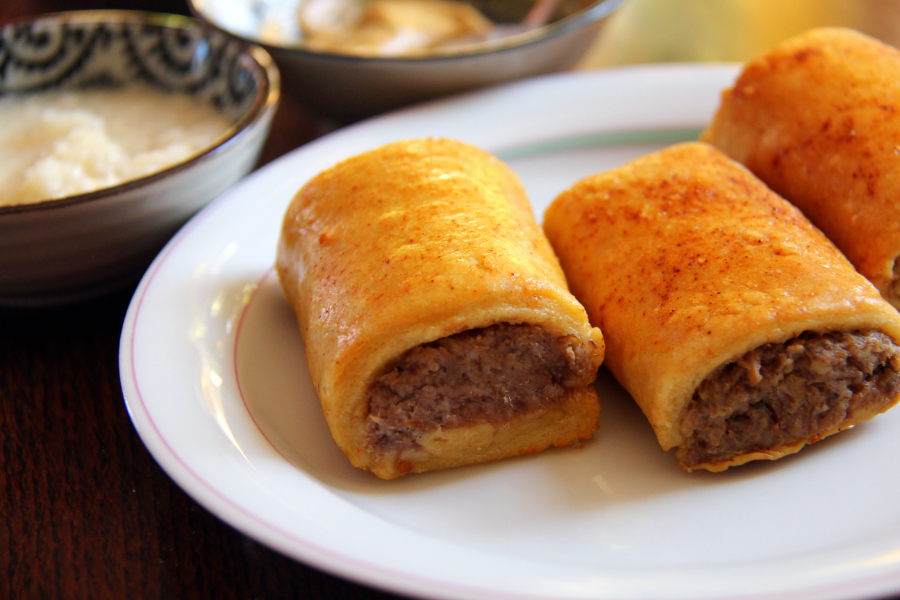
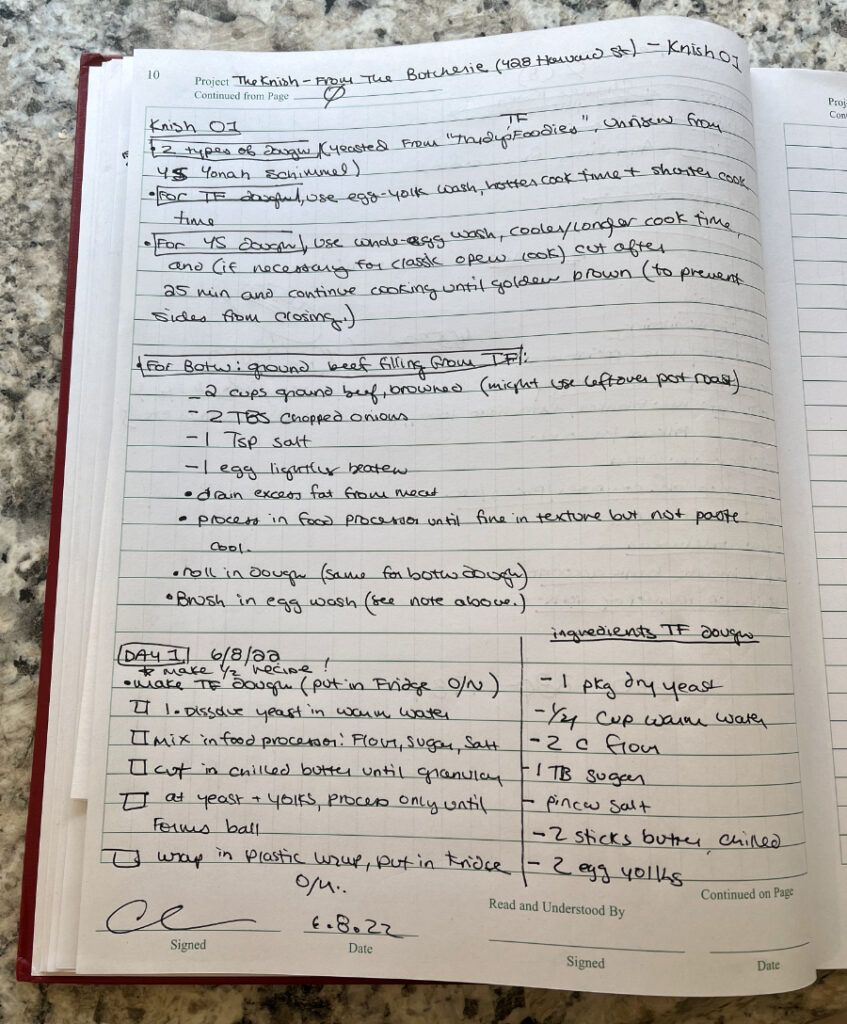



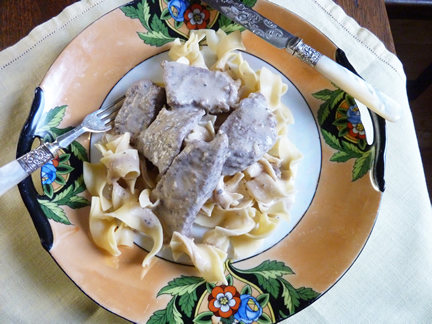
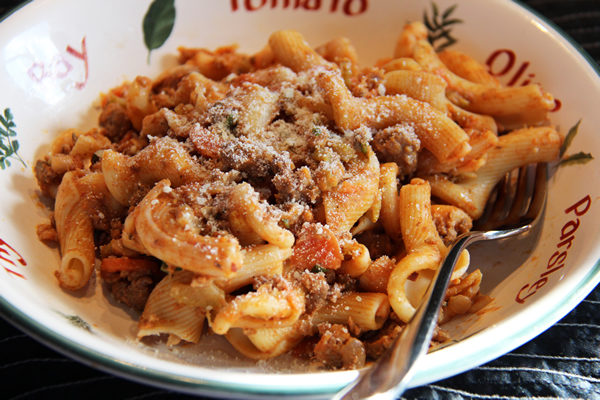
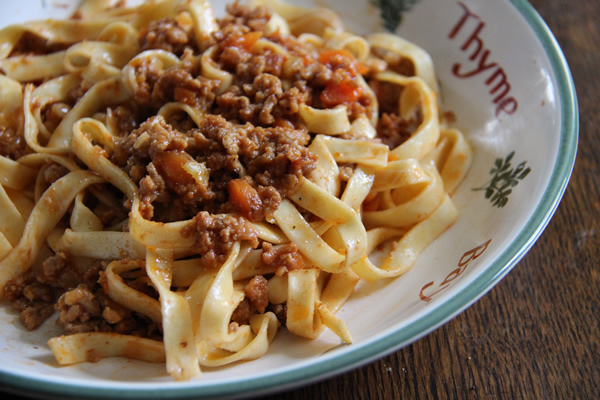
2 Comments
Chuck
I’ve been searching for this recipe for 30 years. Growing up in Boston, I used to buy the knishes from Myers Kosher Kitchen at a deli cafe in a local grocery store. When they went out of business, The Butcherie started selling knishes that looked and tasted almost exactly like them. I even flew up to Boston 15 years ago and visited The Butcherie and bought a case of 144 of them frozen and brought them back to Florida. This recipe sounds very promising, and similar to what the staff at The Butcherie had described to me. Living out of the country now, I had almost given up. I will try these soon!
Diane Brody
Dear Chuck,
So you’re hooked, too!
Please give this a try and see if it satisfies your craving for Butcherie knishes. And please let me know how it goes, and if you have any suggestions for improvement.
Thanks!
Best,
Diane